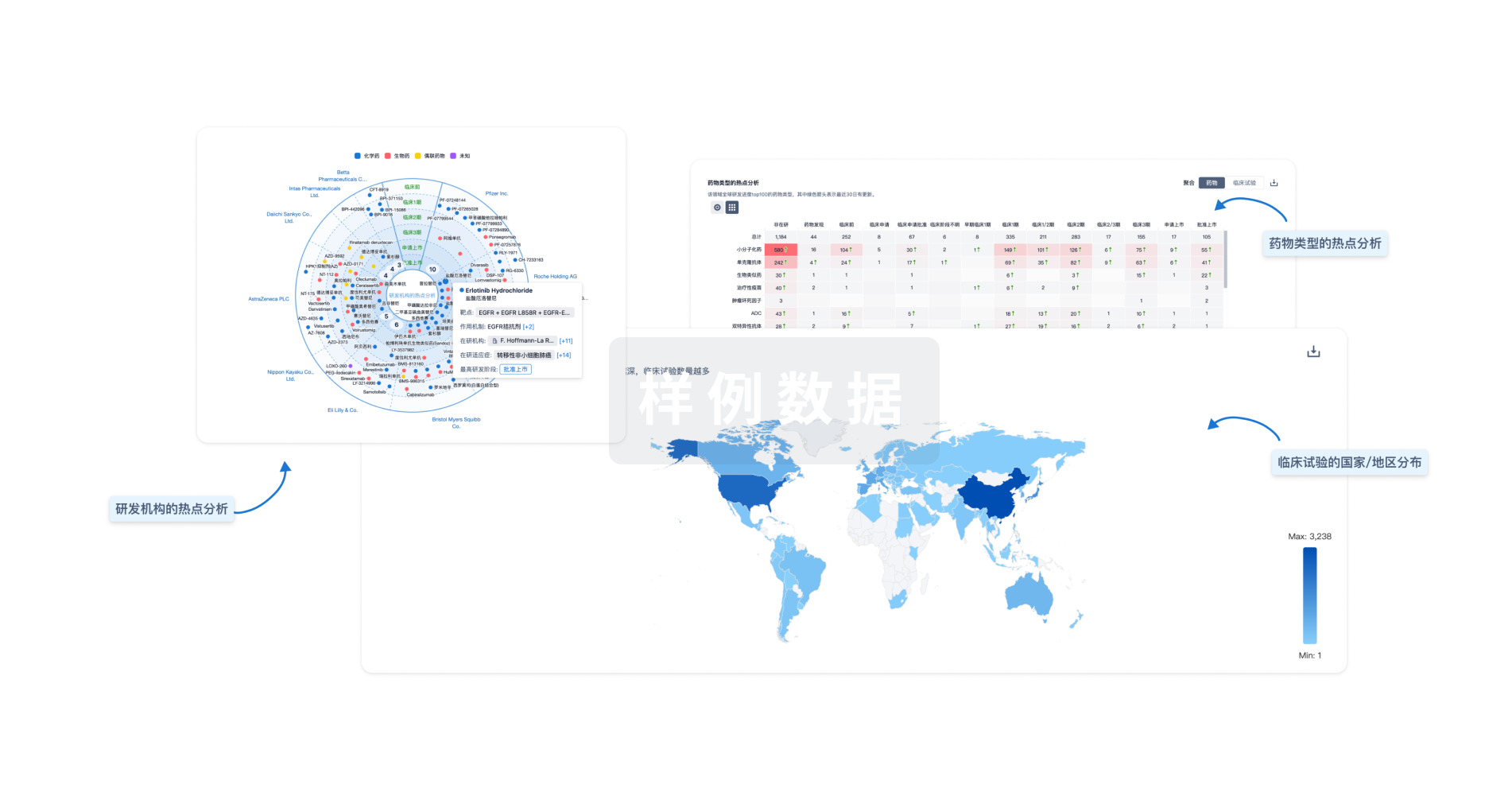预约演示
更新于:2025-05-07
Dyscalculia
计算障碍
更新于:2025-05-07
基本信息
别名 Acalculia, Secondary、Acalculias, Secondary、Acquired Dyscalculia + [51] |
简介 A disorder characterized by impaired ability to comprehend numerical representation and rules, recall numerical facts, and perform arithmetic and related operations due to innate neurological lesion in areas of the brain that are important in numerical processing. |
关联
29
项与 计算障碍 相关的临床试验NCT06878690
Characterization of Sleep Disorders in Patients With Specific Learning Disabilities According to Age, Sex, Associated Comorbidities and Treatments
Specific learning disorders, or SLD, are cognitive and behavioral conditions that emerge during childhood and involve significant difficulties in acquiring and performing specific intellectual, motor, language, and social functions. These disorders impact personal, social, academic, and professional functioning throughout life. In France, between 6% and 8% of the population, including both children and adults, are affected by at least one type of SLD.
SLD are also frequently associated with Attention Deficit Hyperactivity Disorder (ADHD), with prevalence rates ranging from 33% to 70%, depending on the study. This comorbidity leads to more severe attention and learning difficulties than when ADHD or SLD occur independently.
ADHD is a common neurodevelopmental disorder that affects cognitive attentional processes, with or without hyperactivity. It is estimated to affect approximately 5.3% of children and adolescents worldwide and about 3% of adults.
The assessment of these disorders is conducted through a neuropsychological evaluation, which determines the type and severity of cognitive impairments.
Several studies report that 55% to 74% of children with ADHD experience sleep difficulties.
To date, only two studies have examined the prevalence of sleep disorders among children with SLD disorders. One of these studies focused exclusively on dyslexia, with or without ADHD. The results revealed significantly higher scores among dyslexic children compared to controls when completing sleep disorder assessment questionnaires (SDSC). The main difficulties were related to "sleep onset and maintenance disorders," "sleep-related breathing disorders," and "wakefulness disorders." The second study, using the same questionnaire, compared children with ADHD, SLD disorders, and both combined. The group with co-existing SLD and ADHD disorders exhibited significantly more sleep disturbances than the other groups, primarily sleep onset and maintenance disorders.
Despite the importance of these studies, they focused only on sleep disorders associated with dyslexia, without considering other learning disorders such as dyspraxia, dyscalculia, or dysgraphia. Furthermore, when ADHD was taken into account, the studies did not differentiate between its various forms, limiting the interpretation of the results. Additionally, no research has tracked the evolution of sleep disorders in the SLD +/- ADHD population from childhood through adolescence and into adulthood.
In this study, the investigators aim to evaluate sleep disorders in the SLD population (with or without ADHD) in France through online questionnaires. These questionnaires will be offered to 1,000 children (aged ≥4 years) and adults diagnosed with at least one specific learning disorder.
Primary Objective:
The main objective of this study is to assess the frequency and nature of sleep disorders in patients (both adults and children) with specific learning disorders, with or without ADHD.
Secondary Objectives:
* Characterize the "SLD" patient population in France by considering age and gender:
o Determine the prevalence of co-morbidities, such as: ADHD Anxiety and depressive disorders Other reported medical conditions
* Assess the types of care provided (medication or other) for both children and adults
* Determine the frequency of SLD in a familial context
* Identify whether the following factors are associated with a higher frequency of sleep disorders:
* Single SLD vs. multiple SLD
* The presence of ADHD, anxiety-depressive disorders, or other medical conditions alongside SLD
* Demographic characteristics (age, gender, etc.)
* Family history of SLD among relatives (parents and siblings)
* Medication use
SLD are also frequently associated with Attention Deficit Hyperactivity Disorder (ADHD), with prevalence rates ranging from 33% to 70%, depending on the study. This comorbidity leads to more severe attention and learning difficulties than when ADHD or SLD occur independently.
ADHD is a common neurodevelopmental disorder that affects cognitive attentional processes, with or without hyperactivity. It is estimated to affect approximately 5.3% of children and adolescents worldwide and about 3% of adults.
The assessment of these disorders is conducted through a neuropsychological evaluation, which determines the type and severity of cognitive impairments.
Several studies report that 55% to 74% of children with ADHD experience sleep difficulties.
To date, only two studies have examined the prevalence of sleep disorders among children with SLD disorders. One of these studies focused exclusively on dyslexia, with or without ADHD. The results revealed significantly higher scores among dyslexic children compared to controls when completing sleep disorder assessment questionnaires (SDSC). The main difficulties were related to "sleep onset and maintenance disorders," "sleep-related breathing disorders," and "wakefulness disorders." The second study, using the same questionnaire, compared children with ADHD, SLD disorders, and both combined. The group with co-existing SLD and ADHD disorders exhibited significantly more sleep disturbances than the other groups, primarily sleep onset and maintenance disorders.
Despite the importance of these studies, they focused only on sleep disorders associated with dyslexia, without considering other learning disorders such as dyspraxia, dyscalculia, or dysgraphia. Furthermore, when ADHD was taken into account, the studies did not differentiate between its various forms, limiting the interpretation of the results. Additionally, no research has tracked the evolution of sleep disorders in the SLD +/- ADHD population from childhood through adolescence and into adulthood.
In this study, the investigators aim to evaluate sleep disorders in the SLD population (with or without ADHD) in France through online questionnaires. These questionnaires will be offered to 1,000 children (aged ≥4 years) and adults diagnosed with at least one specific learning disorder.
Primary Objective:
The main objective of this study is to assess the frequency and nature of sleep disorders in patients (both adults and children) with specific learning disorders, with or without ADHD.
Secondary Objectives:
* Characterize the "SLD" patient population in France by considering age and gender:
o Determine the prevalence of co-morbidities, such as: ADHD Anxiety and depressive disorders Other reported medical conditions
* Assess the types of care provided (medication or other) for both children and adults
* Determine the frequency of SLD in a familial context
* Identify whether the following factors are associated with a higher frequency of sleep disorders:
* Single SLD vs. multiple SLD
* The presence of ADHD, anxiety-depressive disorders, or other medical conditions alongside SLD
* Demographic characteristics (age, gender, etc.)
* Family history of SLD among relatives (parents and siblings)
* Medication use
开始日期2025-04-16 |
申办/合作机构 |
DRKS00033068
Development and Evaluation of an Intervention for Adolescents and Adults with Dyscalculia - SMILE
开始日期2024-01-24 |
申办/合作机构- |
NCT05884541
Promoting Math in Young Children: Leveraging Pediatric Clinics to Reach Underrepresented Children in Rural Communities
The goals of this clinical trial to examine how pediatricians prescribing early math enriching texts to the parents of their patients affects the early math skills of under-resourced pre-kindergarten-aged children in rural Oregon. The main question it aims to answer is: What is the impact of the text intervention on early math skills in preschool-aged children? Participants will be randomized to receive the early math text intervention or standard of care. Researchers will compare pre-and-post math performance between the intervention and control group.
开始日期2023-08-01 |
申办/合作机构 |
100 项与 计算障碍 相关的临床结果
登录后查看更多信息
100 项与 计算障碍 相关的转化医学
登录后查看更多信息
0 项与 计算障碍 相关的专利(医药)
登录后查看更多信息
1,117
项与 计算障碍 相关的文献(医药)2025-05-13·Neurology
Longitudinal Evolution of Posterior Cortical Atrophy
Article
作者: Shir, Dror ; Day, Gregory Scott ; Knopman, David S. ; Tajfirouz, Deena ; Dickson, Dennis W. ; Machulda, Mary M. ; Josephs, Keith Anthony ; Whitwell, Jennifer L. ; Reichard, R. Ross ; Petersen, Ronald C. ; McCarter, Stuart J. ; Murray, Melissa E. ; Botha, Hugo ; Boeve, Bradley F. ; Graff-Radford, Jonathan ; Graff-Radford, Neill R. ; Lee, Noah ; Nguyen, Aivi T. ; Jones, David T. ; Ramanan, Vijay K.
2025-05-01·Journal of Learning Disabilities
Concept-Focused and Procedure-Focused Instruction on the Algebra Performance of Grade 9 Students With and Without Mathematics Difficulty
Article
作者: Lee, Jihyun
2025-05-01·Development and Psychopathology
The typical and atypical developing mind: a common model
Article
作者: Demetriou, Andreas ; Papadopoulos, Timothy C ; Spanoudis, George
6
项与 计算障碍 相关的新闻(医药)2025-04-15
·梅斯医学
在神经退行性疾病的家族中,后皮质萎缩(PCA)堪称"最会伪装的杀手"。这种以视觉空间功能进行性损害为特征的综合征,常常让患者在眼科诊所和精神科门诊辗转多年才能获得正确诊断。近期梅奥诊所一项跨越28年、纳入558名患者的大型研究,首次全面揭示了PCA从起病到晚期的发展轨迹。数据显示,患者平均需要经历3.6年的误诊历程,近半数人曾接受眼科检查,23%被误诊为精神疾病——其中年轻女性尤为"受伤"。这些数字背后,是无数患者因诊断延误而错失早期干预机会的遗憾故事。研究团队挖掘了1995-2023年间就诊患者的完整医疗档案,发现PCA的起病方式充满迷惑性。最常见的首发症状包括经常放错物品、阅读困难、驾驶障碍等看似普通的视觉问题,而医生们最初记录的典型体征则是结构性失用、计算障碍、同时性失认和空间知觉缺陷——这些专业术语背后,是患者逐渐失去用眼睛理解世界的残酷过程。令人震惊的是,在神经系统评估前,49%的患者已经进行过眼科检查,16%甚至接受了眼科手术,而他们的视力其实完全正常。更令人心碎的是,那些早发型(<65岁)的女性患者,有更高比例被贴上焦虑症或抑郁症的标签,直到认知测试揭开了大脑萎缩的真相。当研究者分析患者的生物标志物时,一个关键发现浮出水面:在158例完成脑脊液检测的患者中,88%呈现阿尔茨海默病(AD)特征性改变。这解释了为何PCA患者最终往往发展为典型AD痴呆,但两者的初期轨迹截然不同。研究创新性地将患者分为"纯PCA"和"PCA-plus"两组,后者同时符合其他神经退行综合征的诊断标准。随时间推移,PCA-plus比例持续上升,这种表型的复杂演变提示我们:PCA可能不是单一疾病,而是多种神经退行病变共有的"视觉表现型"。认知评分曲线显示,患者在前十年经历快速功能下降(每年STMS评分下降4.2分),随后衰退速度逐渐减缓——这种非线性轨迹对临床试验设计具有重要启示。这项研究最发人深省的部分,是揭示了医疗系统对PCA的"认知盲区"。当一位中年主妇抱怨看不清书上的文字时,眼科医生检查后给出"老花眼"的诊断;当她开始把钥匙放进冰箱,家人带她看心理医生;直到某天她再也不能自己系扣子,神经科医生才通过MRI发现枕叶萎缩。这条典型的诊断路径平均耗时3.6年,而在此期间,β淀粉样蛋白可能已经摧毁了大片视觉相关皮层。参考资料:[1]Graff-Radford J. Longitudinal Evolution of Posterior Cortical Atrophy: Diagnostic Delays, Overlapping Phenotypes, and Clinical Outcomes. Neurology. 2025 May 13;104(9):e213559. doi: 10.1212/WNL.0000000000213559.撰文 | 梅斯医学编辑 | 木白● 热议!医院新规:正高每周一个大夜班!副主任医师吐槽:小医生累跑了,却让43岁的我去一线值班!人手不够也不招,高年资医生也值夜班了● “花90元挂号,做完检查专家下班了”“每次拿药都得挂号!”多起医疗投诉引发轰动!卫健委:一次挂号管8天,首诊未完成无需再挂号● 每天1杯酒,死亡风险降20%?哈佛最新研究:适量喝酒不仅改善血脂水平,降低死亡风险,还能防痴呆!但要控制好量版权说明:梅斯医学(MedSci)是国内领先的医学科研与学术服务平台,致力于医疗质量的改进,为临床实践提供智慧、精准的决策支持,让医生与患者受益。欢迎个人转发至朋友圈,谢绝媒体或机构未经授权以任何形式转载至其他平台。点击下方「阅读原文」 立刻下载梅斯医学APP!
2024-09-21
导读
我国老年痴呆症患者超过1500万人。随着人口老龄化,神经衰退性疾病的人数也在迅速增加。
此前,我们有幸与郁金泰教授一起来聊老年痴呆症现有的认知和未来的希望。郁教授是复旦大学附属华山医院神经内科主任医师、教授,复旦大学神经病学研究所常务副所长,对老年痴呆症有很深入的研究。
郁教授介绍到,老年痴呆症与血管风险因素、情感、教育水平、社交活动密切相关。“经常锻炼身体、保持脑部活跃、确保良好的睡眠,对预防阿尔兹海默病至关重要”。
01
什么是神经衰退性疾病?
问:常见的神经衰退性疾病有哪些?
郁金泰:神经衰退性疾病,又被称为神经退行性疾病或神经变性疾病,是与年龄增长密切相关的神经系统疾病。其中,最常见的是阿尔兹海默病,除了阿尔兹海默病之外,还有帕金森病,它是第二常见的神经退行性疾病。
总体来说,我们把神经衰退性疾病分为两大类:一类是与认知障碍相关,另一类与运动障碍相关,包括帕金森病、多系统萎缩等,这些疾病统称为神经退行性疾病。
问:和身体其他疾病相比,这类疾病有哪些特点?
郁金泰:神经退行性疾病的一个显著特点是与年龄密切相关。随着年龄的增长,这些疾病的发病率逐渐升高。以阿尔兹海默病为例,60岁以上的人群患病率约为5%,但在70岁以上可能升至近20%,在90岁以上,患病率可能达到30%至40%。
此外,这类神经退行性疾病的主要特征是大脑萎缩、神经元变性和损伤,从而导致功能的丧失,通常来说是不可逆的,目前我们尚不能完全逆转其发病和发展过程,这也是这个领域研究和治疗上的重要挑战之一。
问:在研究和治疗上,目前这类疾病的困难和挑战有哪些?
郁金泰:这些神经退行性疾病与年龄相关,有着起病隐匿、逐渐进展的特性,发病往往在不知不觉中逐渐加重,这使早期诊断变得非常困难。
另一方面,这些疾病主要会引起大脑的变性和萎缩,神经元丧失,因此在临床症状明显时,大脑的结构已经受到严重破坏,比如说萎缩、变性,或者神经元丢失。目前还没有药物可以有效逆转这些疾病的病理进程,因此早期诊断和更好的预防策略至关重要,但这也是巨大的挑战。
02
老年痴呆的主要有哪些症状
问:接下来我们想了解一种典型的神经衰退性疾病——老年痴呆症。您能介绍一下这是一种怎样的脑疾病,它有哪种典型的特征?
郁金泰:对于阿尔兹海默病,老百姓俗称老年痴呆,这是一种最为常见的神经衰退性疾病,也是导致痴呆的最常见原因。约有三分之二的痴呆病例与aβ蛋白的变性有关。与其他神经退行性疾病一样,它的特点也是先引起疾病,然后逐步进展的过程。随着年龄的增长,它的发病率也逐年上升。
在阿尔兹海默病的临床表现中,最为典型的特征是情景记忆障碍:患者常常会忘记刚刚发生的事情,但却能记住早些年的事情。随着疾病不断恶化,除了记忆力问题外,还会出现语言障碍、视觉空间障碍和计算障碍等其他认知功能的异常。
在疾病的晚期,患者可能还会出现精神问题和行为异常,对其生活质量产生严重影响。阿尔兹海默病的另一个主要病理特征是大脑中淀粉样蛋白的沉积和异常磷酸化所导致的神经元缠结,这构成了该疾病的两大核心病理。
两大核心病理为阿尔兹海默病的病理诊断提供了“金标准”。目前,针对阿尔兹海默病的生物学诊断和治疗主要集中在研究这两大核心病理,并展开一系列探索性工作。
问:目前,老年痴呆症流行趋势是怎样的?
郁金泰:事实上,不仅在中国,老年痴呆症在全球都呈现出每20年翻一番的增长趋势。
这主要归因于两个主要因素:一方面,正如前面提到的,这类疾病与年龄密切相关,而当前社会正在经历老龄化的过程,因此老年痴呆的发病率逐渐上升。另一方面,更为重要的原因是生活质量的提高,人的寿命逐渐延长,这也导致了老年痴呆的发病风险增加。
此外,还有其他危险因素需要考虑,包括心脑血管疾病以及相关的血管代谢性疾病。这些因素的不断增加也间接导致了阿尔兹海默病的发病率逐年上升。
03
导致老年痴呆症的几种假说
问:老年痴呆症是一个非常复杂的疾病。目前老年痴呆症的起因有哪些假说?
郁金泰:关于阿尔兹海默病,其实其发病机制非常复杂,目前病因尚未完全明确。当然,目前有许多不同的假说,包括淀粉样蛋白级联假说、tau异常磷酸化假说,还有涉及感染、炎症以及钙稳态失调、胆碱酯酶等假说。总的来说,当前公认度最高的是淀粉样蛋白级联假说。
该假说认为,脑内淀粉样蛋白,尤其是aβ蛋白异常增多并发生错误的折叠,从而在大脑内形成老年斑。这一现象引发了一系列下游的淀粉样蛋白级联反应,导致了tau异常磷酸化问题,进而导致神经元的变性、损伤和凋亡,最终脑部发生萎缩,达到一定程度时,会影响大脑的各项功能,尤其是记忆功能,从而出现了疾病的临床症状。
问:导致阿尔茨海默病的其他假说还有哪些,您能否介绍下吗?
郁金泰:最主要的研究假说仍然是淀粉样蛋白级联假说,此外,tau的异常磷酸化假说也变得越来越常见。
特别值得注意的是,淀粉样蛋白级联假说目前在阿尔兹海默症相关药物研发领域占据主导地位,许多药物研究都以此为基础。
提出这个假说最主要针对有些特殊的家族性阿尔兹海默病,它会出现导致相关的淀粉样蛋白产生基因的突变,这种异常导致大脑中淀粉样蛋白的过多积累,最终在一定年龄后导致阿尔兹海默病发病。因此,大家目前公认的还是淀粉样蛋白级联假说。
04
如何及早诊断老年痴呆症
问:目前该如何诊断老年痴呆症?
郁金泰:对于阿尔兹海默病的诊断方法和工具,现在已经有了越来越多的选择。
首先,我们拥有相关的诊断标准,当然这些标准也在不断演变。过去,阿尔兹海默病通常被看作是一种临床综合征。我们通常通过以下步骤来检查它:首先,判断患者是否有痴呆症状,然后观察是否符合阿尔兹海默病的典型特征,最后排除其他潜在原因的痴呆。这些步骤可以用于诊断阿尔兹海默病。
然而,这存在一些问题。一方面,我们难以实现早期诊断,因为通常只有在疾病发展到痴呆阶段时才能做出诊断,而此时往往已经错过了最佳的干预时机。
另一方面,通过临床诊断的准确性并不太高。当然,阿尔兹海默病的黄金标准是通过尸检病理学观察来判断是否存在淀粉样蛋白的沉积和tau蛋白异常磷酸化形成神经纤维缠结,从而进行病理学诊断。相比之下,临床诊断的准确性只有70%到80%。
鉴于上述缺陷和挑战,阿尔兹海默病的诊断标准正在不断演进和修订。这些演进和修订主要基于与阿尔兹海默病相关的特定生物标志物的研究进展。特别是,我们现在可以通过检测脑脊液中的淀粉样蛋白问题和tau异常磷酸化的生物标志物来进行诊断。
此外,分子影像学技术,如淀粉样蛋白PET和tau PET,允许我们更精确地检测脑内的淀粉样蛋白。因此,现在的诊断标准将阿尔兹海默病的定位从以前的临床综合症扩展到了临床、生物学的层面。这意味着我们可以考虑一系列临床表现以及一些生物学指标,以更精准地进行诊断。
我们可以将阿尔兹海默病的诊断分为临床前、认知功能受损、痴呆这三个不同的阶段。
最近,阿尔兹海默病国际大会上发布了最新版本的诊断标准。这一最新版本将阿尔兹海默病完全定义为一种生物学个体,只要个体检测出脑内淀粉样蛋白沉积和tau异常磷酸化的迹象,就被认为患有阿尔兹海默病。
05
导致老年痴呆症的因素有哪些?
问:目前已经知道哪些因素与老年痴呆症密切相关,基因和环境的因素对老年痴呆症的影响分别有多少?
郁金泰:对于阿尔兹海默病,实际上我们将其分为两大类。
一类被称为家族性阿尔兹海默病,它的发病率相对较低,大约在1%到5%之间,通常与特定的遗传基因突变有关,这些基因携带者到达一定年龄后会发展为该疾病;
一类是散发性阿尔兹海默病,约95%的阿尔兹海默病属于散发性病例,其发病是基因和环境因素相互作用的结果。研究显示,遗传因素大约占发病风险的40%,而环境因素可能占60%左右。
问:您能否简要介绍目前已知与老年痴呆症密切相关的环境因素,例如生活习惯、饮食习惯等?
郁金泰:目前比较明确的因素包括生活习惯,如运动、睡眠、认知活动和社交互动等,这些因素对改善认知功能和预防痴呆症起到非常重要的作用。
此外,血管危险因素也非常关键,包括糖尿病、高血压、心脑血管疾病,甚至低血压都可以显著增加阿尔兹海默病的发病风险。
其他因素包括情感问题,如抑郁症,它也可以显著增加老年痴呆症的风险。此外,同型斑胱酸水平和其他代谢指标的异常也与疾病风险增加有关。
教育水平也是一个非常重要的因素,研究表明,受教育程度越高,将来患上这种疾病的风险越低。
06
老年痴呆症有药可医吗?
问:近年来,在老年痴呆症的研究和药物开发方面取得了显著进展。您能否简要分析一下过去几年取得的突破?
郁金泰:最显著的突破之一涉及基于淀粉样蛋白级联假说的药物研发。该假说认为淀粉样蛋白的异常产生和沉积在阿尔兹海默病的发病机制中起到关键作用。鉴于淀粉样蛋白在病理过程中的重要性,研究人员开发了一系列选择性抗体,这些抗体能够有选择性地清除脑内的淀粉样蛋白,并取得了可喜的成果。
首先,去年单抗三期临床试验结果非常出色,于今年7月在美国获得了无条件的上市批准。
此外,另一个同类产品也取得了很好的三期试验结果。如果一切顺利,预计今年下半年也将获得上市批准。
因此,这一类药物与过去的药物有所不同。以往的药物主要是与神经递质相关,而现在我们拥有了能够清除脑内毒性淀粉样蛋白的单抗药物,再加上与神经递质药物的结合,可能对减少这种疾病的发生产生积极作用。
问:未来对于老年痴呆症的治疗,还会有新的方向吗?
郁金泰:关于未来老年痴呆症的治疗,刚才提到了在过去几年取得的重大突破,主要集中在淀粉样蛋白级联假说的研究领域。另一主要核心病理是tau蛋白的异常磷酸化导致神经元缠结的形成,这也是非常重要的病理过程。因此,针对这一领域也出现了许多新药的研发,并取得了突破性进展。这些药物能够抑制tau蛋白的异常磷酸化,从而延缓病程和进展。对于围绕tau蛋白的病理研究,我们有理由相信未来将会取得重大突破。
当然,对于阿尔兹海默病来说,刚才提到的这两大核心病理都至关重要。未来,我们是否能够将清除脑内淀粉样蛋白和抑制相关tau蛋白问题的治疗方法相结合,来清除脑内异常的tau蛋白缠结,这可能对该疾病的延缓和发展发挥更重要的作用。
07
对于公众来说,如何预防老年痴呆症
问:普通公众应该如何预防老年痴呆症?
郁金泰:这个问题也是我们团队最突出的特点,是我们在老年痴呆症研究方面做出的最大贡献。首先,我们进行了阿尔兹海默症的可调危险因素研究,确定了多个与阿尔兹海默症相关的可调控危险因素。
随后,我们又联合国际专家,制定了一份阿尔兹海默病的循证预防指南,旨在减少该疾病的发生和发展。那么我们如何进行预防呢?在这项研究中,我们提出了21条建议,其中有19条被认为是值得推荐的,而有两条则不被推荐。
最主要的建议之一是关注生活方式,包括经常锻炼身体、保持脑部活跃、确保良好的睡眠和情绪健康,这些因素对于预防阿尔兹海默病至关重要。此外,终身学习和积极社交也被认为有助于减少风险。
除了生活方式,控制血压和血糖也被认为至关重要,以及尽量避免脑部损伤和创伤。此外,预防中风也是老年痴呆症风险管理的重要方面。
其他相关因素还包括心脏健康,尤其是心房颤动,因为它们与阿尔兹海默病的发生发展密切相关。
抑郁症也被认为是一个重要的危险因素,因此保持良好的情绪状态对于防止老年痴呆症的发生也非常重要。此外,同型半胱氨酸水平的控制也被建议,可以适当补充一些维生素C等微量元素。
除此之外,有两项不被推荐的建议。一项是使用雌激素替代疗法来预防阿尔兹海默症,相关临床试验均是失败的,临床试验表明这一方法不仅无法预防,反而会增加老年痴呆的风险,我们也明确不推荐使用胆碱酯酶抑制剂来预防该疾病,因为这些药物只能改善症状,而不能起到预防的作用。
最后,体重管理也很重要,过于肥胖或过于瘦都对健康不利。
识别微信二维码,添加生物制品圈小编,符合条件者即可加入
生物制品微信群!
请注明:姓名+研究方向!
版
权
声
明
本公众号所有转载文章系出于传递更多信息之目的,且明确注明来源和作者,不希望被转载的媒体或个人可与我们联系(cbplib@163.com),我们将立即进行删除处理。所有文章仅代表作者观点,不代表本站立场。
2023-10-18
导读我国老年痴呆症患者超过1500万人。随着人口老龄化,神经衰退性疾病的人数也在迅速增加。最近,我们有幸与郁金泰教授一起来聊老年痴呆症现有的认知和未来的希望。郁教授是复旦大学附属华山医院神经内科主任医师、教授,复旦大学神经病学研究所常务副所长,对老年痴呆症有很深入的研究。郁教授介绍到,老年痴呆症与血管风险因素、情感、教育水平、社交活动密切相关。“经常锻炼身体、保持脑部活跃、确保良好的睡眠,对预防阿尔兹海默病至关重要”。01什么是神经衰退性疾病?问:常见的神经衰退性疾病有哪些?郁金泰:神经衰退性疾病,又被称为神经退行性疾病或神经变性疾病,是与年龄增长密切相关的神经系统疾病。其中,最常见的是阿尔兹海默病,除了阿尔兹海默病之外,还有帕金森病,它是第二常见的神经退行性疾病。总体来说,我们把神经衰退性疾病分为两大类:一类是与认知障碍相关,另一类与运动障碍相关,包括帕金森病、多系统萎缩等,这些疾病统称为神经退行性疾病。问:和身体其他疾病相比,这类疾病有哪些特点?郁金泰:神经退行性疾病的一个显著特点是与年龄密切相关。随着年龄的增长,这些疾病的发病率逐渐升高。以阿尔兹海默病为例,60岁以上的人群患病率约为5%,但在70岁以上可能升至近20%,在90岁以上,患病率可能达到30%至40%。此外,这类神经退行性疾病的主要特征是大脑萎缩、神经元变性和损伤,从而导致功能的丧失,通常来说是不可逆的,目前我们尚不能完全逆转其发病和发展过程,这也是这个领域研究和治疗上的重要挑战之一。问:在研究和治疗上,目前这类疾病的困难和挑战有哪些?郁金泰:这些神经退行性疾病与年龄相关,有着起病隐匿、逐渐进展的特性,发病往往在不知不觉中逐渐加重,这使早期诊断变得非常困难。另一方面,这些疾病主要会引起大脑的变性和萎缩,神经元丧失,因此在临床症状明显时,大脑的结构已经受到严重破坏,比如说萎缩、变性,或者神经元丢失。目前还没有药物可以有效逆转这些疾病的病理进程,因此早期诊断和更好的预防策略至关重要,但这也是巨大的挑战。02老年痴呆的主要有哪些症状问:接下来我们想了解一种典型的神经衰退性疾病——老年痴呆症。您能介绍一下这是一种怎样的脑疾病,它有哪种典型的特征?郁金泰:对于阿尔兹海默病,老百姓俗称老年痴呆,这是一种最为常见的神经衰退性疾病,也是导致痴呆的最常见原因。约有三分之二的痴呆病例与aβ蛋白的变性有关。与其他神经退行性疾病一样,它的特点也是先引起疾病,然后逐步进展的过程。随着年龄的增长,它的发病率也逐年上升。在阿尔兹海默病的临床表现中,最为典型的特征是情景记忆障碍:患者常常会忘记刚刚发生的事情,但却能记住早些年的事情。随着疾病不断恶化,除了记忆力问题外,还会出现语言障碍、视觉空间障碍和计算障碍等其他认知功能的异常。在疾病的晚期,患者可能还会出现精神问题和行为异常,对其生活质量产生严重影响。阿尔兹海默病的另一个主要病理特征是大脑中淀粉样蛋白的沉积和异常磷酸化所导致的神经元缠结,这构成了该疾病的两大核心病理。两大核心病理为阿尔兹海默病的病理诊断提供了“金标准”。目前,针对阿尔兹海默病的生物学诊断和治疗主要集中在研究这两大核心病理,并展开一系列探索性工作。问:目前,老年痴呆症流行趋势是怎样的?郁金泰:事实上,不仅在中国,老年痴呆症在全球都呈现出每20年翻一番的增长趋势。这主要归因于两个主要因素:一方面,正如前面提到的,这类疾病与年龄密切相关,而当前社会正在经历老龄化的过程,因此老年痴呆的发病率逐渐上升。另一方面,更为重要的原因是生活质量的提高,人的寿命逐渐延长,这也导致了老年痴呆的发病风险增加。此外,还有其他危险因素需要考虑,包括心脑血管疾病以及相关的血管代谢性疾病。这些因素的不断增加也间接导致了阿尔兹海默病的发病率逐年上升。03导致老年痴呆症的几种假说问:老年痴呆症是一个非常复杂的疾病。目前老年痴呆症的起因有哪些假说?郁金泰:关于阿尔兹海默病,其实其发病机制非常复杂,目前病因尚未完全明确。当然,目前有许多不同的假说,包括淀粉样蛋白级联假说、tau异常磷酸化假说,还有涉及感染、炎症以及钙稳态失调、胆碱酯酶等假说。总的来说,当前公认度最高的是淀粉样蛋白级联假说。该假说认为,脑内淀粉样蛋白,尤其是aβ蛋白异常增多并发生错误的折叠,从而在大脑内形成老年斑。这一现象引发了一系列下游的淀粉样蛋白级联反应,导致了tau异常磷酸化问题,进而导致神经元的变性、损伤和凋亡,最终脑部发生萎缩,达到一定程度时,会影响大脑的各项功能,尤其是记忆功能,从而出现了疾病的临床症状。问:导致阿尔茨海默病的其他假说还有哪些,您能否介绍下吗?郁金泰:最主要的研究假说仍然是淀粉样蛋白级联假说,此外,tau的异常磷酸化假说也变得越来越常见。特别值得注意的是,淀粉样蛋白级联假说目前在阿尔兹海默症相关药物研发领域占据主导地位,许多药物研究都以此为基础。提出这个假说最主要针对有些特殊的家族性阿尔兹海默病,它会出现导致相关的淀粉样蛋白产生基因的突变,这种异常导致大脑中淀粉样蛋白的过多积累,最终在一定年龄后导致阿尔兹海默病发病。因此,大家目前公认的还是淀粉样蛋白级联假说。04如何及早诊断老年痴呆症问:目前该如何诊断老年痴呆症?郁金泰:对于阿尔兹海默病的诊断方法和工具,现在已经有了越来越多的选择。首先,我们拥有相关的诊断标准,当然这些标准也在不断演变。过去,阿尔兹海默病通常被看作是一种临床综合征。我们通常通过以下步骤来检查它:首先,判断患者是否有痴呆症状,然后观察是否符合阿尔兹海默病的典型特征,最后排除其他潜在原因的痴呆。这些步骤可以用于诊断阿尔兹海默病。然而,这存在一些问题。一方面,我们难以实现早期诊断,因为通常只有在疾病发展到痴呆阶段时才能做出诊断,而此时往往已经错过了最佳的干预时机。另一方面,通过临床诊断的准确性并不太高。当然,阿尔兹海默病的黄金标准是通过尸检病理学观察来判断是否存在淀粉样蛋白的沉积和tau蛋白异常磷酸化形成神经纤维缠结,从而进行病理学诊断。相比之下,临床诊断的准确性只有70%到80%。鉴于上述缺陷和挑战,阿尔兹海默病的诊断标准正在不断演进和修订。这些演进和修订主要基于与阿尔兹海默病相关的特定生物标志物的研究进展。特别是,我们现在可以通过检测脑脊液中的淀粉样蛋白问题和tau异常磷酸化的生物标志物来进行诊断。此外,分子影像学技术,如淀粉样蛋白PET和tau PET,允许我们更精确地检测脑内的淀粉样蛋白。因此,现在的诊断标准将阿尔兹海默病的定位从以前的临床综合症扩展到了临床、生物学的层面。这意味着我们可以考虑一系列临床表现以及一些生物学指标,以更精准地进行诊断。我们可以将阿尔兹海默病的诊断分为临床前、认知功能受损、痴呆这三个不同的阶段。最近,阿尔兹海默病国际大会上发布了最新版本的诊断标准。这一最新版本将阿尔兹海默病完全定义为一种生物学个体,只要个体检测出脑内淀粉样蛋白沉积和tau异常磷酸化的迹象,就被认为患有阿尔兹海默病。05导致老年痴呆症的因素有哪些?问:目前已经知道哪些因素与老年痴呆症密切相关,基因和环境的因素对老年痴呆症的影响分别有多少?郁金泰:对于阿尔兹海默病,实际上我们将其分为两大类。一类被称为家族性阿尔兹海默病,它的发病率相对较低,大约在1%到5%之间,通常与特定的遗传基因突变有关,这些基因携带者到达一定年龄后会发展为该疾病;一类是散发性阿尔兹海默病,约95%的阿尔兹海默病属于散发性病例,其发病是基因和环境因素相互作用的结果。研究显示,遗传因素大约占发病风险的40%,而环境因素可能占60%左右。问:您能否简要介绍目前已知与老年痴呆症密切相关的环境因素,例如生活习惯、饮食习惯等?郁金泰:目前比较明确的因素包括生活习惯,如运动、睡眠、认知活动和社交互动等,这些因素对改善认知功能和预防痴呆症起到非常重要的作用。此外,血管危险因素也非常关键,包括糖尿病、高血压、心脑血管疾病,甚至低血压都可以显著增加阿尔兹海默病的发病风险。其他因素包括情感问题,如抑郁症,它也可以显著增加老年痴呆症的风险。此外,同型斑胱酸水平和其他代谢指标的异常也与疾病风险增加有关。教育水平也是一个非常重要的因素,研究表明,受教育程度越高,将来患上这种疾病的风险越低。06老年痴呆症有药可医吗?问:近年来,在老年痴呆症的研究和药物开发方面取得了显著进展。您能否简要分析一下过去几年取得的突破?郁金泰:最显著的突破之一涉及基于淀粉样蛋白级联假说的药物研发。该假说认为淀粉样蛋白的异常产生和沉积在阿尔兹海默病的发病机制中起到关键作用。鉴于淀粉样蛋白在病理过程中的重要性,研究人员开发了一系列选择性抗体,这些抗体能够有选择性地清除脑内的淀粉样蛋白,并取得了可喜的成果。首先,去年单抗三期临床试验结果非常出色,于今年7月在美国获得了无条件的上市批准。此外,另一个同类产品也取得了很好的三期试验结果。如果一切顺利,预计今年下半年也将获得上市批准。因此,这一类药物与过去的药物有所不同。以往的药物主要是与神经递质相关,而现在我们拥有了能够清除脑内毒性淀粉样蛋白的单抗药物,再加上与神经递质药物的结合,可能对减少这种疾病的发生产生积极作用。问:未来对于老年痴呆症的治疗,还会有新的方向吗?郁金泰:关于未来老年痴呆症的治疗,刚才提到了在过去几年取得的重大突破,主要集中在淀粉样蛋白级联假说的研究领域。另一主要核心病理是tau蛋白的异常磷酸化导致神经元缠结的形成,这也是非常重要的病理过程。因此,针对这一领域也出现了许多新药的研发,并取得了突破性进展。这些药物能够抑制tau蛋白的异常磷酸化,从而延缓病程和进展。对于围绕tau蛋白的病理研究,我们有理由相信未来将会取得重大突破。当然,对于阿尔兹海默病来说,刚才提到的这两大核心病理都至关重要。未来,我们是否能够将清除脑内淀粉样蛋白和抑制相关tau蛋白问题的治疗方法相结合,来清除脑内异常的tau蛋白缠结,这可能对该疾病的延缓和发展发挥更重要的作用。07对于公众来说,如何预防老年痴呆症问:普通公众应该如何预防老年痴呆症?郁金泰:这个问题也是我们团队最突出的特点,是我们在老年痴呆症研究方面做出的最大贡献。首先,我们进行了阿尔兹海默症的可调危险因素研究,确定了多个与阿尔兹海默症相关的可调控危险因素。随后,我们又联合国际专家,制定了一份阿尔兹海默病的循证预防指南,旨在减少该疾病的发生和发展。那么我们如何进行预防呢?在这项研究中,我们提出了21条建议,其中有19条被认为是值得推荐的,而有两条则不被推荐。最主要的建议之一是关注生活方式,包括经常锻炼身体、保持脑部活跃、确保良好的睡眠和情绪健康,这些因素对于预防阿尔兹海默病至关重要。此外,终身学习和积极社交也被认为有助于减少风险。除了生活方式,控制血压和血糖也被认为至关重要,以及尽量避免脑部损伤和创伤。此外,预防中风也是老年痴呆症风险管理的重要方面。其他相关因素还包括心脏健康,尤其是心房颤动,因为它们与阿尔兹海默病的发生发展密切相关。抑郁症也被认为是一个重要的危险因素,因此保持良好的情绪状态对于防止老年痴呆症的发生也非常重要。此外,同型半胱氨酸水平的控制也被建议,可以适当补充一些维生素C等微量元素。除此之外,有两项不被推荐的建议。一项是使用雌激素替代疗法来预防阿尔兹海默症,相关临床试验均是失败的,临床试验表明这一方法不仅无法预防,反而会增加老年痴呆的风险,我们也明确不推荐使用胆碱酯酶抑制剂来预防该疾病,因为这些药物只能改善症状,而不能起到预防的作用。最后,体重管理也很重要,过于肥胖或过于瘦都对健康不利。本文为科普中国·星空计划扶持作品团队/作者:深究科学审核:陈海(旭解放军总医院(301医院)副所长、研究生导师)出品:中国科协科普部监制:中国科学技术出版社有限公司、北京中科星河文化传媒有限公司近期直播推荐识别微信二维码,添加生物制品圈小编,符合条件者即可加入生物制品微信群!请注明:姓名+研究方向!版权声明本公众号所有转载文章系出于传递更多信息之目的,且明确注明来源和作者,不希望被转载的媒体或个人可与我们联系(cbplib@163.com),我们将立即进行删除处理。所有文章仅代表作者观点,不代表本站立场。
分析
对领域进行一次全面的分析。
登录
或

生物医药百科问答
全新生物医药AI Agent 覆盖科研全链路,让突破性发现快人一步
立即开始免费试用!
智慧芽新药情报库是智慧芽专为生命科学人士构建的基于AI的创新药情报平台,助您全方位提升您的研发与决策效率。
立即开始数据试用!
智慧芽新药库数据也通过智慧芽数据服务平台,以API或者数据包形式对外开放,助您更加充分利用智慧芽新药情报信息。
生物序列数据库
生物药研发创新
免费使用
化学结构数据库
小分子化药研发创新
免费使用

